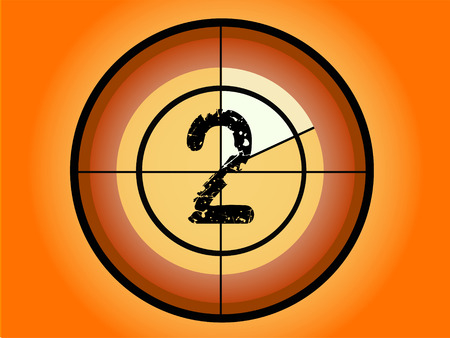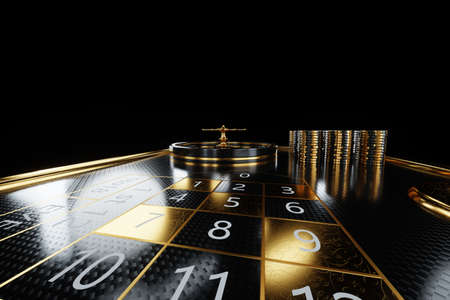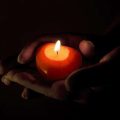Introduction to Rune Reading in British Culture
Rune reading, a practice steeped in the mists of time, has held a significant place within British spiritual and folk traditions. The origins of rune casting can be traced back to the ancient Germanic and Norse peoples, whose seafaring journeys brought their symbols and wisdom to the shores of the British Isles. Over centuries, these mystical glyphs became interwoven with local customs, adapting to the rhythms of Celtic lands and evolving alongside the island’s changing spiritual landscape. In Britain, rune reading is not merely a relic of the past; it is a living art that continues to inspire seekers and practitioners alike. From windswept moors to bustling city enclaves, individuals have long turned to runes for guidance, divination, and insight into life’s mysteries. Today, rune reading stands at a fascinating crossroads—balancing respect for traditional methods handed down through generations with a growing openness to intuitive approaches that reflect modern sensibilities. This ongoing evolution raises an important question: do British rune readers prefer the steadfast path of tradition or the fluidity of intuition when interpreting these ancient symbols?
2. The Traditional Approach: Methods and Interpretations
When exploring the world of rune reading in the United Kingdom, one finds that traditional methods hold a particular reverence among practitioners who value continuity and respect for ancestral customs. This approach is characterised by steadfast adherence to established meanings, carefully observed rituals, and an unwavering commitment to preserving ancient wisdom. Let us delve deeper into how these practices are maintained in contemporary British rune readings.
Established Meanings and Historical Context
Traditional British rune readers often rely on a codified set of interpretations passed down through generations or drawn from respected sources such as the Anglo-Saxon Futhorc. Each rune is imbued with specific meanings, which are seldom deviated from. This consistency ensures that the messages gleaned from the runes remain anchored in their original context, lending a sense of gravity and authenticity to each reading.
| Rune | Traditional Meaning | Associated Element |
|---|---|---|
| Fehu (F) | Wealth, prosperity, new beginnings | Earth |
| Ansuz (A) | Communication, divine inspiration | Air |
| Algiz (Z) | Protection, defence, higher self | Spirit |
| Eiwaz (Y) | Endurance, transformation, resilience | Water |
| Sowilo (S) | Success, guidance, clarity | Fire |
The Role of Rituals in British Tradition
A hallmark of traditional rune reading is the observance of ritual. Practitioners may begin by cleansing their space with incense or salt, invoking ancestral spirits or deities such as Woden or Frigg, and laying out runes upon a cloth reserved solely for divination purposes. These rituals are performed not merely out of habit but as acts of respect—honouring both the tools themselves and the lineage of knowledge they represent.
Ancestral Wisdom Preserved Through Practice
The preservation of ancestral wisdom is central to the traditionalist’s path. British rune readers frequently consult historical texts and oral traditions, ensuring their interpretations align with those used by forebears. By doing so, they maintain a living connection to the past—a bridge between modern-day seekers and the ancient voices that first shaped these symbols’ meanings.
Summary: Why Tradition Endures Among British Rune Readers
The traditional approach to rune reading endures in Britain because it offers stability and a deep-rooted sense of belonging. For many, following established methods is not simply about accuracy; it is an act of cultural preservation and personal devotion. In a rapidly changing world, these time-honoured practices provide a foundation upon which individuals can ground their spiritual explorations.

3. Intuitive Rune Reading: A Modern Movement
In recent years, intuitive rune reading has gained considerable traction among British practitioners seeking a more personalised and adaptive approach to this ancient art. Unlike the traditional method, which relies heavily on established meanings and historical interpretations, intuitive reading encourages individuals to forge a direct, personal connection with the runes themselves. This practice emphasises subjective insight, allowing the reader to draw upon their own instincts and emotional responses when interpreting the symbols.
For many in Britain, especially those newer to the craft or wishing to blend runes with other forms of modern spirituality, intuitive methods offer a sense of freedom and creativity. The emphasis shifts from memorising prescribed meanings to fostering an open-minded engagement with the runes, inviting each session to become unique and responsive to present circumstances. Practitioners often describe this process as akin to having a conversation with the runes, where meaning emerges organically rather than being imposed.
Adaptability is at the heart of intuitive rune reading. British readers may incorporate elements from local folklore, personal ancestry, or even current life challenges into their interpretations. This adaptability reflects broader cultural trends within the UK towards individualism and eclectic spiritual practices. In effect, intuitive rune reading becomes not just a form of divination but a dynamic tool for self-reflection and personal growth—one that resonates deeply with contemporary seekers across Britain.
4. Differences in Practice and Philosophy
In exploring the distinctions between intuitive and traditional rune reading within British communities, it is essential to consider not just technique but the underlying beliefs and communal roles these methods uphold. While both approaches serve as vehicles for guidance and self-reflection, their methodologies and philosophies contrast markedly, shaping the unique tapestry of contemporary British rune practices.
Methodological Divergence
Traditional rune reading in Britain often adheres to well-documented procedures and historical frameworks, drawing from ancient texts such as the Anglo-Saxon Futhorc or Norse Eddas. Practitioners meticulously interpret each rune’s established meaning, typically employing classic spreads and ritualistic preparation. In contrast, intuitive readers may use a more fluid method, allowing personal insight or spiritual impressions to guide interpretation. This might involve meditative states or spontaneous layouts—placing greater emphasis on the reader’s connection to the runes than on prescribed systems.
Philosophical Foundations
The philosophical divide between these approaches is also pronounced. Traditionalists frequently view runes as repositories of ancestral wisdom, with each symbol carrying fixed esoteric and historical significance. Their practice reflects a reverence for lineage, continuity, and the transmission of cultural heritage. Intuitive readers, meanwhile, are often inspired by a belief in personal empowerment and direct communication with universal energies or the subconscious. For them, runes become dynamic tools for present-moment insight rather than relics of the past.
Comparison Table: Traditional vs Intuitive Rune Reading
| Aspect | Traditional Approach | Intuitive Approach |
|---|---|---|
| Methodology | Structured; follows historic texts; fixed spreads | Flexible; guided by intuition or inspiration; spontaneous layouts |
| Belief System | Ancestral wisdom; preservation of tradition; cultural continuity | Personal insight; spiritual connection; adaptability |
| Community Role | Elder advisors; keepers of lore; teachers of heritage | Mediators of change; innovators; facilitators of personal growth |
| Learning Path | Apprenticeship and study of texts; formal mentoring | Self-discovery; experiential learning; peer exchange |
The Roles within British Communities
This divergence naturally influences how practitioners position themselves within local circles. Traditionalists are often seen as custodians—upholding standards, leading ceremonies, and teaching newcomers about British rune heritage. Intuitive readers may foster more egalitarian spaces, encouraging experimentation and individual narratives. Both perspectives are respected in contemporary Britain, reflecting a broader national appreciation for both continuity and creative reinvention.
5. British Practitioners’ Preferences: Insights and Trends
In the contemporary landscape of British rune reading, preferences are shaped by a blend of tradition, innovation, and the unique cultural context of the UK. Through practitioner interviews, recent surveys, and anecdotal accounts from across England, Scotland, Wales, and Northern Ireland, a nuanced picture emerges regarding the popularity of intuitive versus traditional methods.
The Enduring Appeal of Tradition
Many British rune readers, particularly those with longstanding experience or who are rooted in Druidic or Heathen communities, continue to favour traditional interpretations. These practitioners often cite the importance of lineage, historical texts, and runic poems such as the Anglo-Saxon Rune Poem as foundational to their practice. They believe that adhering to established meanings preserves the integrity and depth of runic wisdom.
Younger Voices and Intuitive Exploration
However, there is a noticeable shift among younger generations and those newer to rune work. Interviewees in their twenties and thirties frequently describe an openness to intuitive reading styles. For them, runes serve as a catalyst for personal insight rather than strict adherence to set definitions. Many attribute this trend to the broader rise of holistic and eclectic spirituality within Britain, where personal resonance is often prioritised over dogma.
Regional Nuances
Interestingly, preferences can also reflect regional influences. In urban centres like London and Manchester, where diverse spiritual practices intersect, intuitive approaches flourish. Conversely, in rural areas with a strong sense of heritage—such as parts of Yorkshire or the Scottish Highlands—traditional readings hold greater sway. This regional variation echoes broader patterns seen in other aspects of British folk practice.
Community Dialogue and Hybrid Practices
Across forums and gatherings—from Glastonbury’s spiritual fairs to online communities—practitioners report that respectful dialogue between camps is common. Many now adopt a hybrid approach: grounding their readings in tradition while allowing space for intuition to enrich interpretation. Such flexibility seems characteristic of modern British rune reading culture—a testament to its adaptability and enduring relevance.
Overall, while there remains a deep respect for tradition among British practitioners, current trends show an increasing appreciation for intuitive methods. This synthesis not only reflects changing attitudes but also speaks to the uniquely British way of honouring heritage whilst embracing individual expression.
6. Balancing Tradition and Intuition: Towards an Integrated Approach
Within the British runic community, there is a growing recognition that both tradition and intuition have valuable roles to play in rune reading. While traditional methods provide a framework rooted in centuries of lore, many practitioners are finding that weaving in personal intuition adds a deeper layer of meaning and resonance. This blended approach is not seen as a rejection of the old ways, but rather as an evolution—honouring the wisdom of the past while allowing for individual insight and contemporary relevance.
British rune readers often begin with traditional interpretations, drawing upon historical sources such as the Anglo-Saxon Futhorc or Icelandic rune poems. These time-honoured meanings act as a foundation, ensuring that readings stay connected to their cultural origins. However, many practitioners then allow space for intuitive impressions—subtle feelings, images, or personal associations that arise during a reading. This combination brings a richness to the practice, making each session unique and personally meaningful.
This integrated approach can be seen in group gatherings across Britain, from small covens in the Cotswolds to urban workshops in London. Practitioners share stories of how certain runes may consistently evoke specific emotions or memories for them, even if these do not align precisely with traditional definitions. Rather than dismissing these experiences, there is an increasing openness to exploring how personal context can coexist with established lore.
The balance is delicate; British rune readers are keenly aware of the importance of respecting ancestral knowledge while also recognising that spiritual practices must remain alive and responsive to present needs. By thoughtfully blending tradition with intuition, they are cultivating a vibrant and dynamic rune reading culture—one that reflects both collective heritage and individual journey.
7. Conclusion: The Future of Rune Reading in the UK
As we look to the horizon of rune reading in Britain, it is clear that the practice stands at a crossroads, shaped by centuries of tradition yet invigorated by fresh, intuitive approaches. The ongoing dialogue between traditionalists—who honour the ancient Norse methods and structured symbolism—and intuitive readers—who trust their inner sense and adapt meanings to personal context—reflects broader shifts within British spiritual culture. With each generation, there is both a reverence for heritage and a willingness to experiment, creating a dynamic interplay that enriches the runic landscape.
British practitioners today move gracefully between these styles, often blending the wisdom of the past with modern sensibilities. This evolution mirrors cultural changes across the UK, where openness to diverse beliefs continues to grow and individual expression is increasingly valued. As runes remain a tool for insight and guidance, they are likely to become even more personalised; workshops and community gatherings now often encourage seekers to find their own path, while still respecting collective lore.
Looking ahead, the future of rune reading in Britain seems poised for further transformation. As digital platforms foster new communities and educational resources, access to both traditional teachings and innovative techniques will expand. At the same time, renewed interest in local folklore may inspire practitioners to reconnect with regional histories and landscapes, grounding rune work in uniquely British contexts.
Ultimately, whether one is drawn to the structured clarity of traditional readings or the nuanced depth of intuition-led practices, what matters most is the sincerity of connection—to the runes themselves, to ancestral wisdom, and to one’s own inner voice. As cultural attitudes continue to shift, British rune reading will undoubtedly find new forms of expression while maintaining its enduring spirit: a respectful balance between old ways and new insights.


